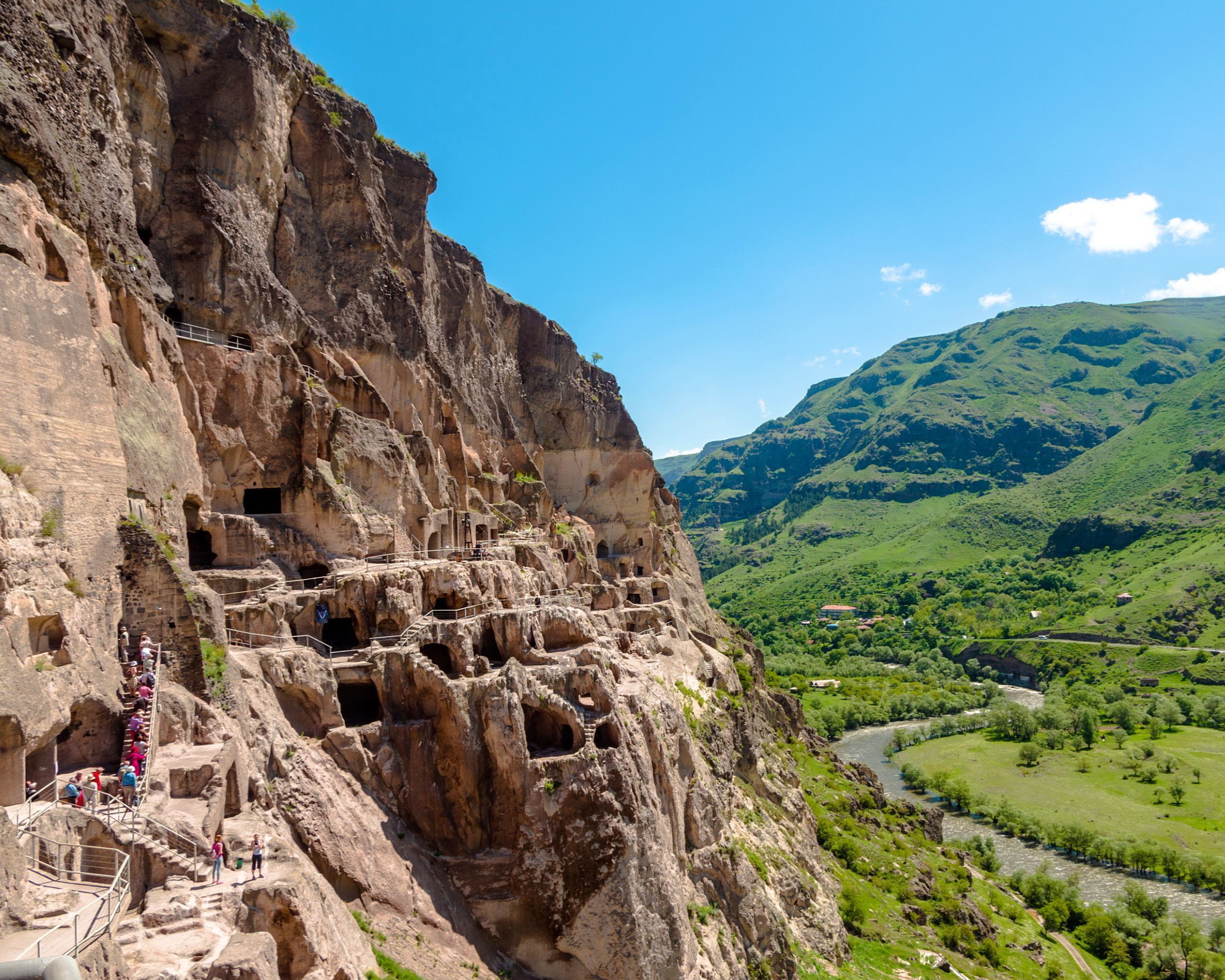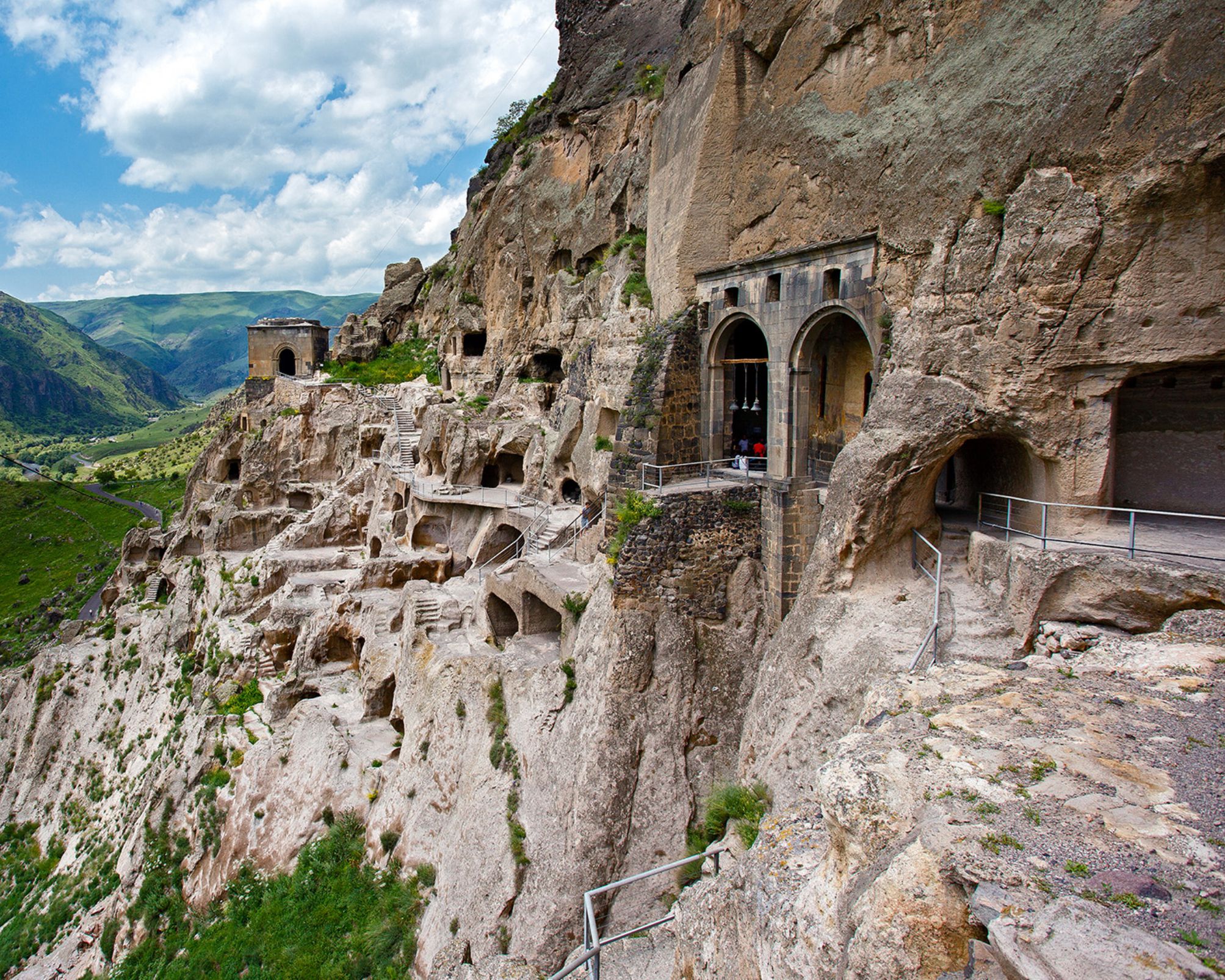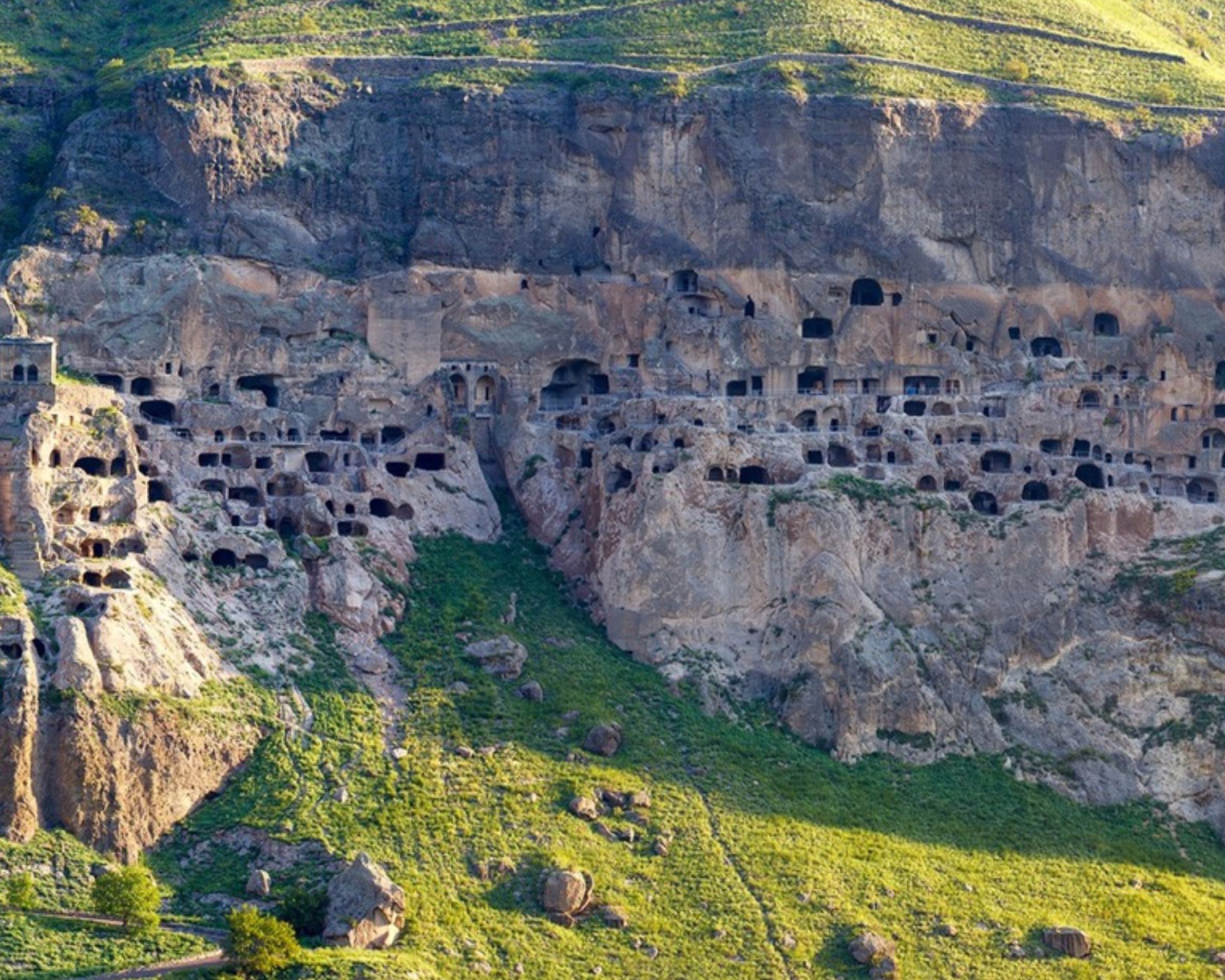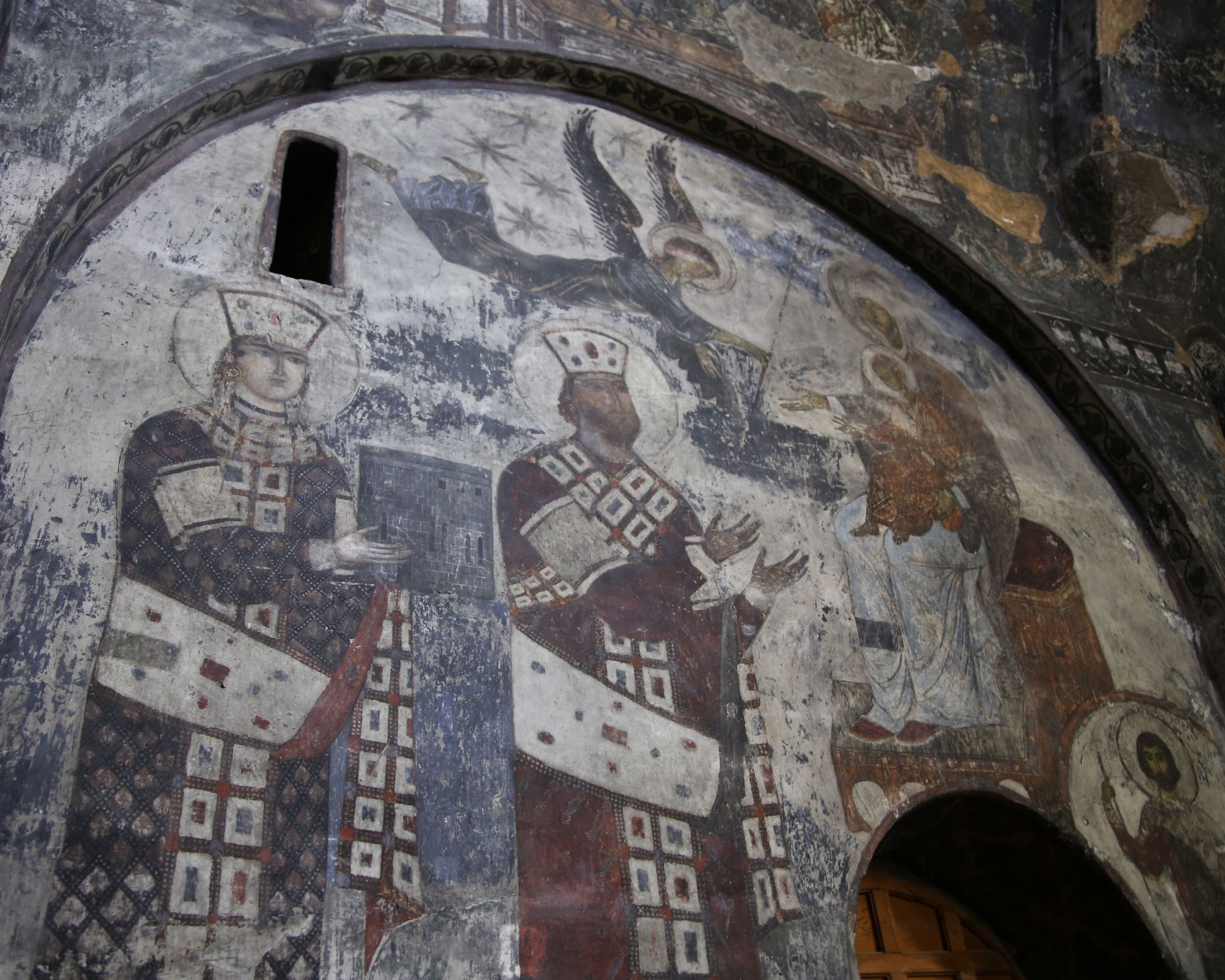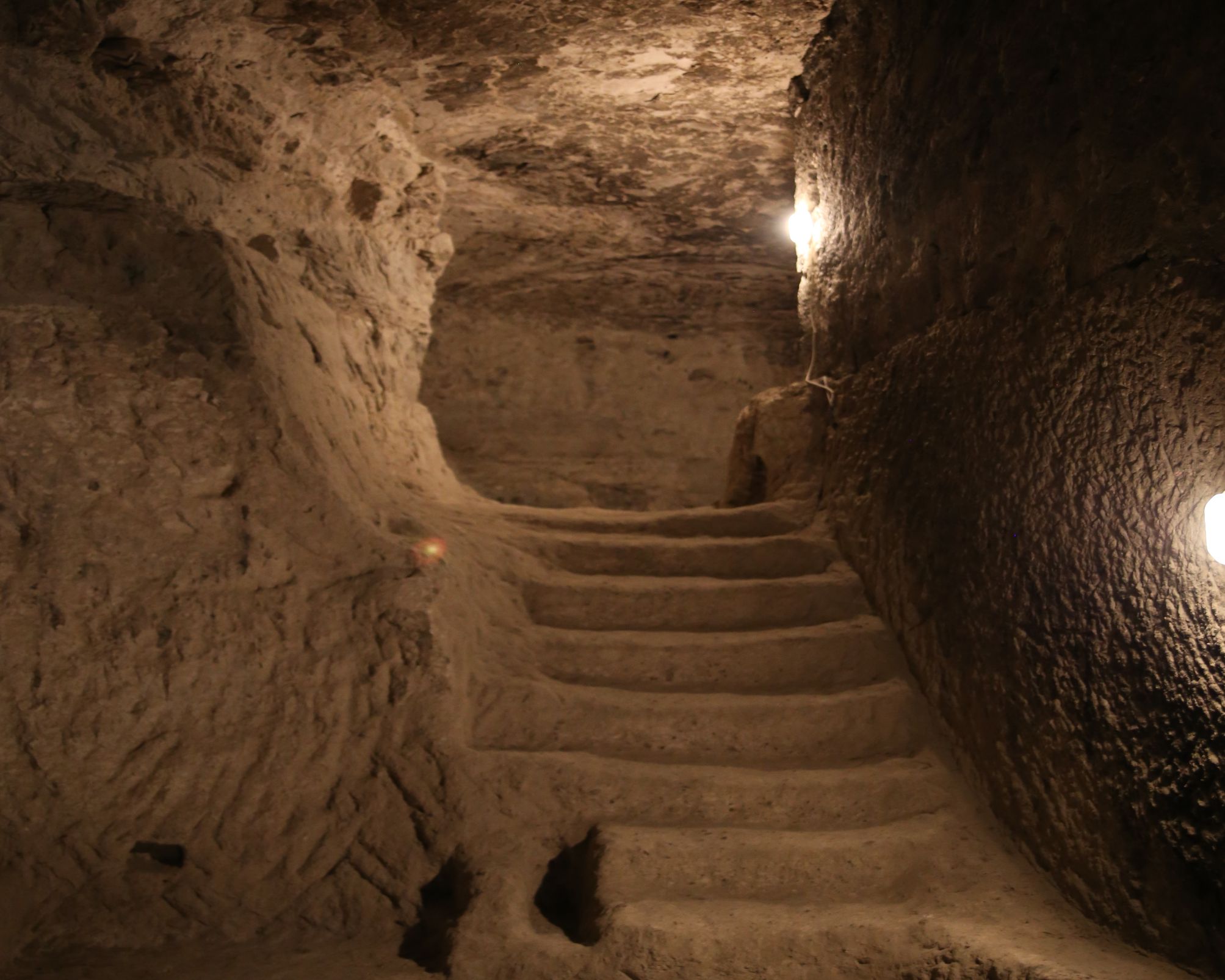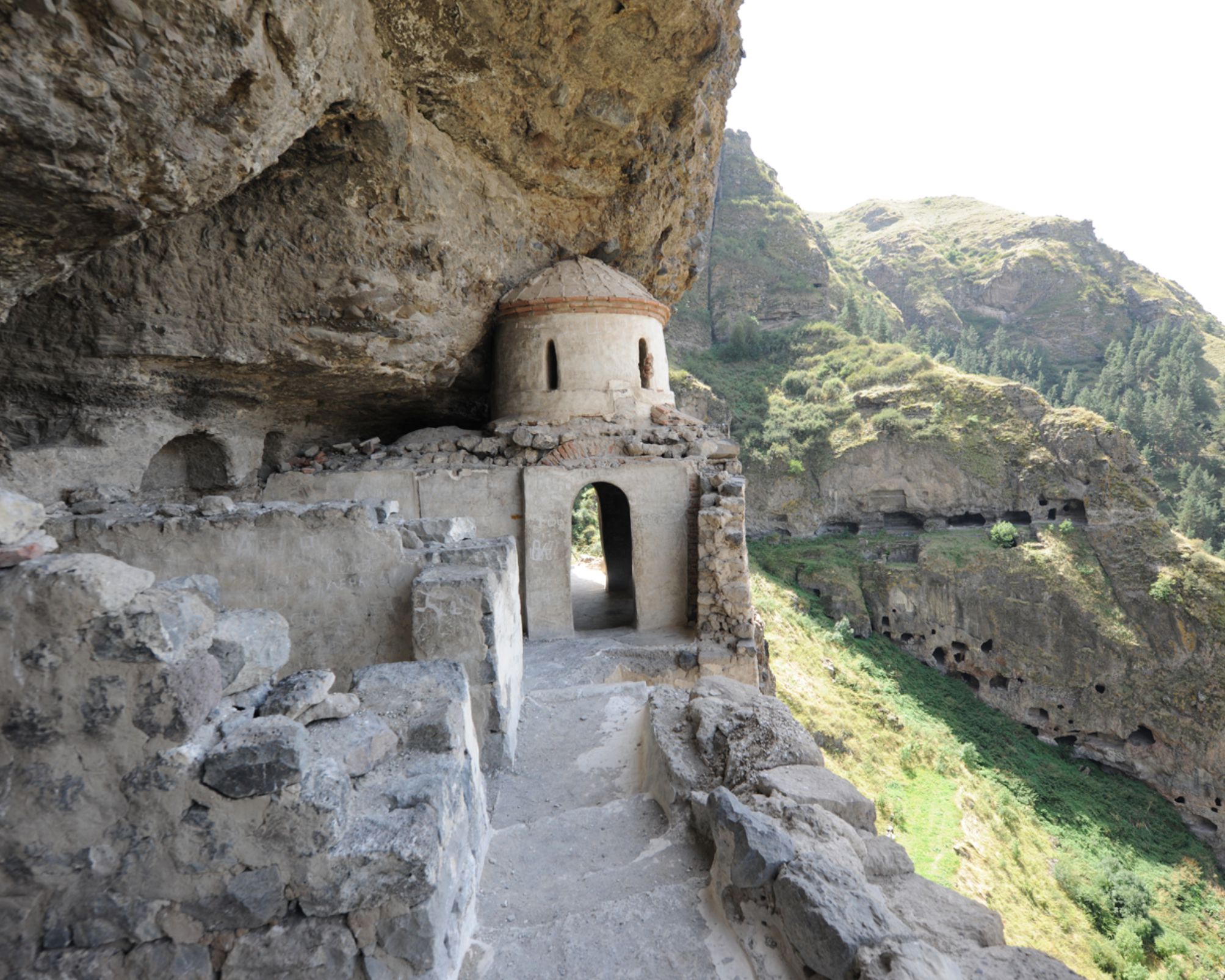Vardzia
Cave monastery complex of the XII — XIII centuries in southern Georgia, in Javakheti. An outstanding monument of medieval Georgian architecture. Over 900 meters along the left bank of river Mtkvari, up to 600 rooms were carved in the sheer tuff wall of Mount Erusheti: churches, chapels, living cells, storerooms, baths, refectory, treasuries, libraries. The premises of the complex go 50 meters deep into the rock and rise to a height of eight floors. Secret passages linking the premises, the remains of the water supply and irrigation system are still preserved. In the center of the monastery is the main temple in honor of the Assumption of the Blessed Virgin Mary. The temple is decorated with pilasters, unique mural paintings on the walls (including images of King George III and Queen Tamar. The frescoes of the Dormition of the Mother of God, Ascension and Transfiguration are of great historical and artistic value. The ensemble of Vardzia was created mainly in 1156-1205 during the reign of George III and his daughter Queen Tamara. Located on the southwestern border of Georgia, the monastery-fortress blocked the gorge of the Mtkvari River from the invasion of Iranians and Turks from the south. At that time, all the premises of the monastery were hidden by a rock. There were only three underground passages through which large troops of warriors could appear completely unexpectedly for the enemy. As a result of a large earthquake, which occurred in Samtskhe in 1283, a rock formation up to 15 meters thick separated from the cliff and fell into the Mtkvari River.
Cave monastery complex of the XII — XIII centuries in southern Georgia, in Javakheti. An outstanding monument of medieval Georgian architecture. Over 900 meters along the left bank of river Mtkvari, up to 600 rooms were carved in the sheer tuff wall of Mount Erusheti: churches, chapels, living cells, storerooms, baths, refectory, treasuries, libraries. The premises of the complex go 50 meters deep into the rock and rise to a height of eight floors. Secret passages linking the premises, the remains of the water supply and irrigation system are still preserved. In the center of the monastery is the main temple in honor of the Assumption of the Blessed Virgin Mary. The temple is decorated with pilasters, unique mural paintings on the walls (including images of King George III and Queen Tamar. The frescoes of the Dormition of the Mother of God, Ascension and Transfiguration are of great historical and artistic value. The ensemble of Vardzia was created mainly in 1156-1205 during the reign of George III and his daughter Queen Tamara. Located on the southwestern border of Georgia, the monastery-fortress blocked the gorge of the Mtkvari River from the invasion of Iranians and Turks from the south. At that time, all the premises of the monastery were hidden by a rock. There were only three underground passages through which large troops of warriors could appear completely unexpectedly for the enemy. As a result of a large earthquake, which occurred in Samtskhe in 1283, a rock formation up to 15 meters thick separated from the cliff and fell into the Mtkvari River.

